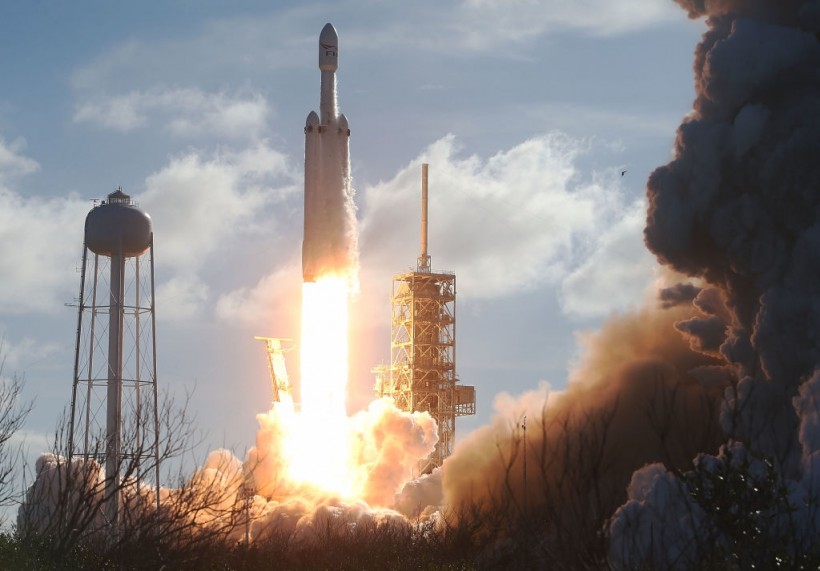SpaceX's Falcon Heavy rocket has accomplished an impressive feat.
The private space company recently announced it successfully launched three satellites in a single Falcon Heavy rocket in its sixth mission toward Earth's orbit.
This particular launch experienced a slew of delays due to various reasons, ranging from hostile weather to technical difficulties.
SpaceX Falcon Heavy Rocket Sixth Launch Details
Deployment of @Astranis's first MicroGEO satellite confirmed
— SpaceX (@SpaceX) May 1, 2023
SpaceX's Falcon Heavy rocket is considered one of the company's most powerful rockets to date. According to a Florida Today article, it has the power of three Falcon 9 rockets strapped together, simply put.
Thanks to this, the rocket was able to carry and deploy three different satellites into Earth's orbit - a difficult feat to pull off for sure. The company's official Twitter account mentioned that the rocket carried a ViaSat-3 Americas satellite, its primary payload, a communications satellite dubbed Arcturus, and a GS-1 cubesat.
The ViaSat-3 Americas satellite is a 14,000-pound broadband satellite operated by California-based company Viasat, which expects the satellite to be the "largest all-electric satellite ever to be launched," per Space.com. Meanwhile, the Arcturus is a communications craft operated by San Francisco-based Astranis Space Technologies, which will provide data throughput of up to 7.5 Gbps for the state of Alaska and its surrounding regions, per Everyday Astronaut.
Read More: EU Proposes New Copyright Rules for Companies Using AI Tools
Last but not least is the GS-1 cubesat, operated by Washington-based Gravity Space. Its primary purpose is to provide communication for Internet of Things applications, though it will do other things in orbit, such as imaging both the Earth and spatial bodies and provide orbital slot reservation services around the geosynchronous arc, per Gravity Space's description of the satellite.
SpaceX didn't have its Falcon Heavy rocket release all three satellites simultaneously - it first deployed ViaSat-3 Americas around four and a half hours after lift-off, while it launched Gravity Space's cubesat seven minutes after its primary payload. Astranis' Arcturus communications satellite followed suit seven minutes after GS-1.
The deployment of all three satellites is a success for SpaceX, which experienced numerous delays before it could launch its Falcon Heavy rocket from Florida. A Space News article mentioned that the rocket was originally scheduled to launch on Apr. 18, only to get delayed for undisclosed reasons following a static-fire test. Its next launch on Apr. 26 was also skipped over by a day to complete data reviews.
Unfortunately, severe weather on Apr. 27, which would last until Apr. 29, pushed the rocket's launch date to Apr. 30.
SpaceX Falcon Heavy Rocket Specifications

A picture of SpaceX's Falcon Heavy lifting off from launch pad 39A at Kennedy Space Center on February 6, 2018 in Cape Canaveral, Florida.
The SpaceX Falcon Heavy rocket is literally three Falcon 9 rockets strapped together. According to SpaceX's description of it, it is composed of three reusable Falcon 9 nine-engine cores that generate more than five million pounds of thrust at liftoff. It can carry around 64 metric tons to Low-Earth orbit (LEO) and approximately 30 metric tons to Geostationary Transfer orbit (GTO).
This significant decrease between the rocket's carrying capacities is due to the distance between the two orbits. LEO satellites are found at an altitude of 2,000 km or less from Earth's equator, while GTO satellites are located 36,000 km from the equator, per NASA and the European Space Agency, respectively.
Related Article: FAA Investigates SpaceX Starship Launch for Raining Hazardous Debris










